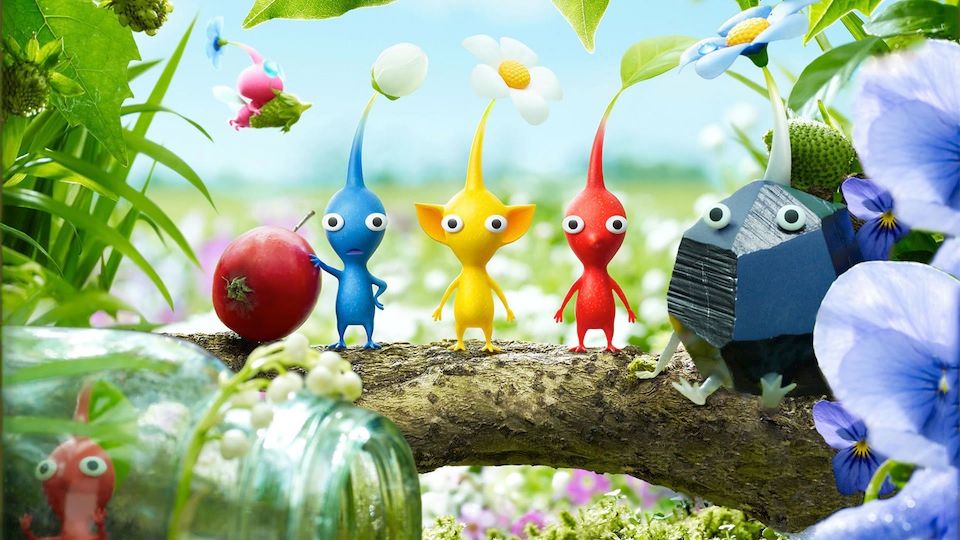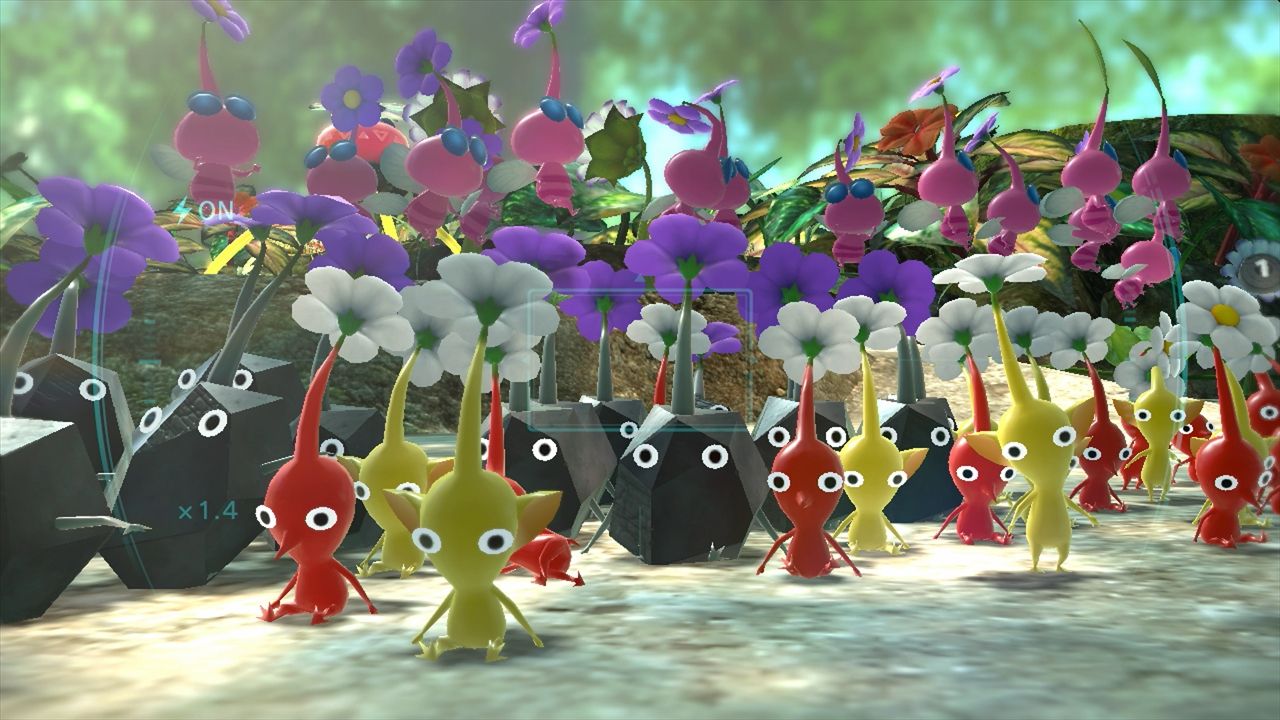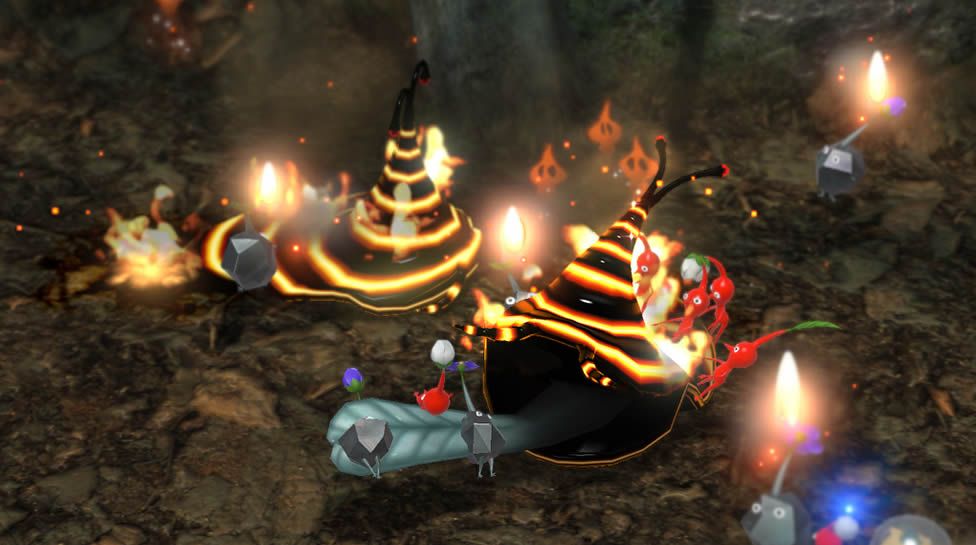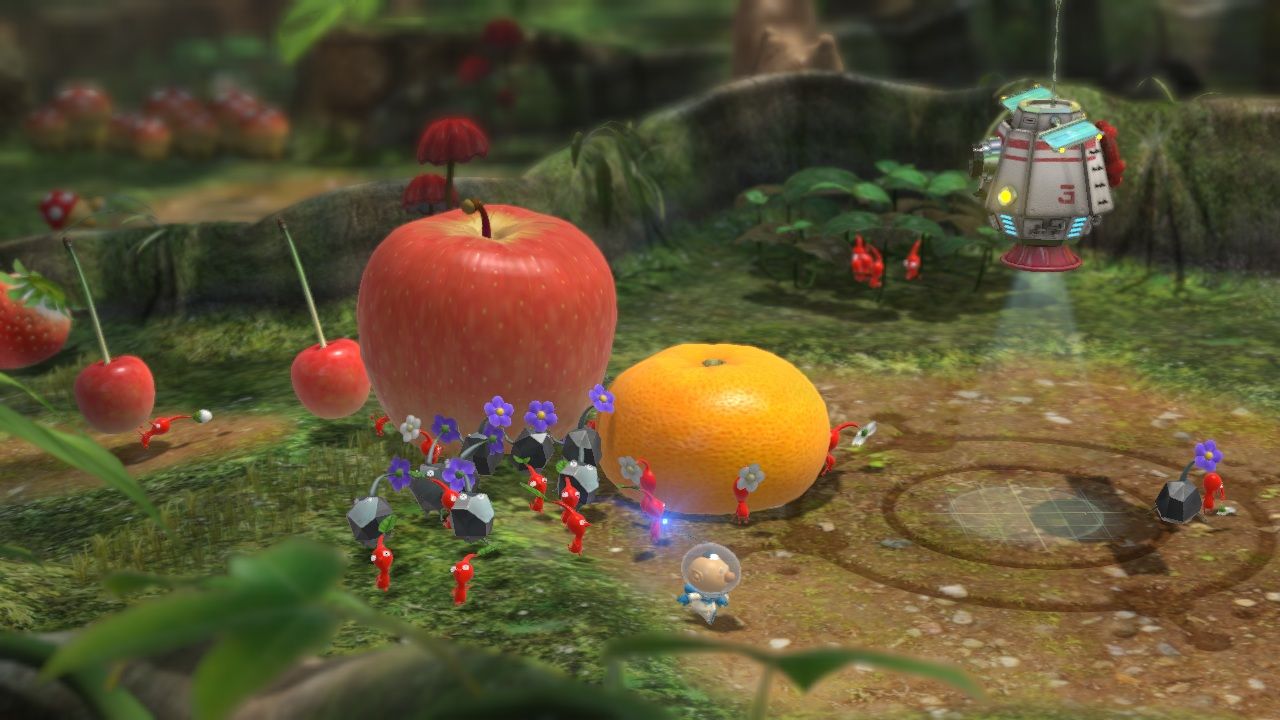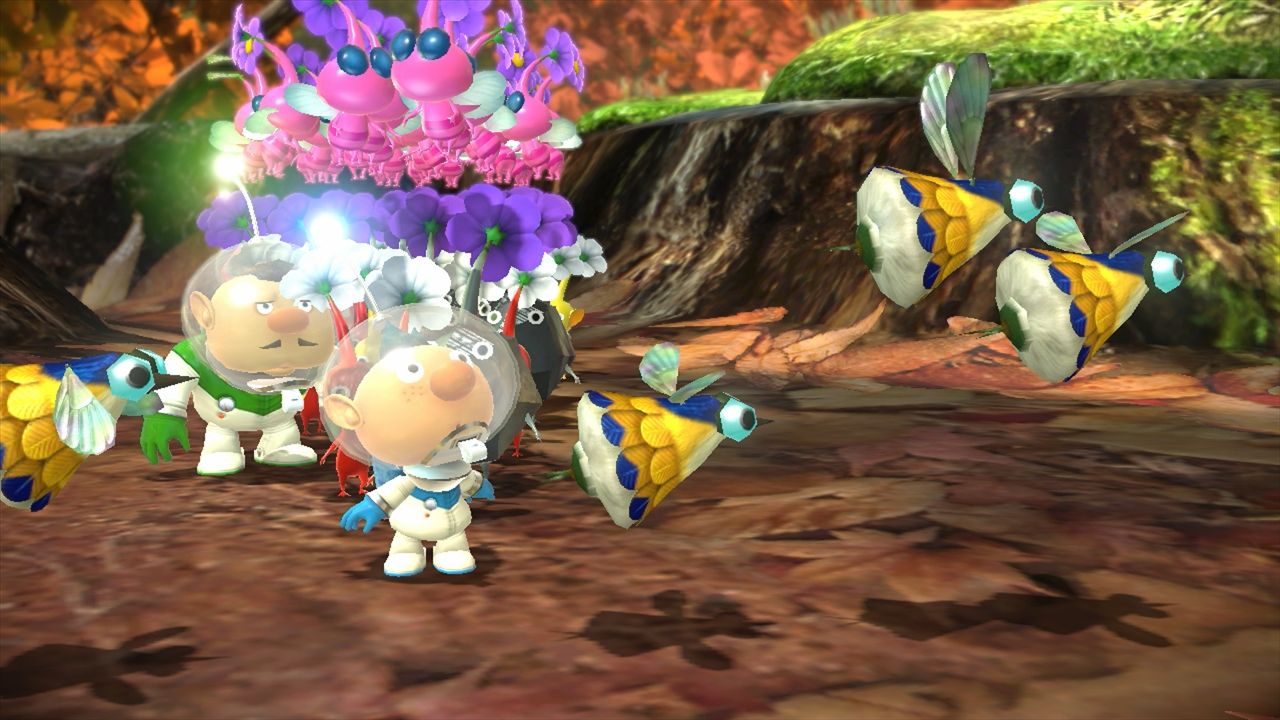When you think about it, Pikmin is a pretty normal series by Nintendo standards. This is a company who’s made games about Italian plumbers going through sewers to rescue princesses from an enormous turtle, and a brooding barrel-lobbing, woman-stealing gorilla. Even outside of the whole “giant anthropomorphic animals kidnapping women” genre, there’s a whole lot of weird in Nintendo’s stable. Whenever somebody accuses Pikmin (a game about human-esque creatures using ant-like creatures to do their bidding) of being too strange, I simply remind them about that other series with the pink puffball who sucks enemies into its mouth to kill them. Outside of all the cuteness and colorfulness, Pikmin is one of the most solid RTS games on the market and one of the few you could find yourself up until 3 a.m. playing, only to wake up at 8 a.m. to the sound of your kids accidentally committing video game genocide. There’s simply no other game that has you resource managing, strategizing and leading an army one minute and desperately wanting a plush of the soldiers the next.
Instead of starring the lovable Captain Olimar, Pikmin 3 features three new characters to take control of. Facing extinction from a food source depletion on their planet of Koppai, the three astronauts of the SS Drake set off to PNF-404 after receiving coordinates to the uncharted planet. Unfortunately, their ship malfunctions upon reaching its atmosphere, causing it to crash land and scatter the crew across the planet. Taking control of the engineer Alph, it’s up to you to rescue the self-absorbed botanist, Brittany, and dense, but well-meaning, Captain Charlie. After eventually reuniting, the game shifts to collecting as much fruit as possible to take back to Koppai as well as recovering a part to make their Warp Drive functional. The three new characters are a great addition and have enough witty banter to keep you entertained throughout the game. Those with an affinity for Olimar need not worry, however, as his exploration notes that give you insight into his latest unseen journey are sprinkled throughout planet.
There are a whopping five ways to play the game. Those who inexplicably preferred the original Gamecube controls can play with the Wii U Pro Controller and have the HUD displayed on screen, which gives a very similar experience. Off-screen gameplay is also an option for those not wanting to monopolize screen, but it makes things a bit too condensed. The next option is to simply use the Wii Remote and Nunchuck with the HUD on screen, which is exactly how the Wii ports played. Of course, this is a system with a tablet as a controller, which can be used to play the game on entirely. The controls of this scheme are again very similar to the Gamecube version, with the addition of the GamePad screen to show vital information. A map of the current area is shown continually on screen that can be flicked through at anytime, showing the locations of items and other important locations. Having it right in front of you at all times is quite simply a godsend that keeps you better focused on the tasks at hand. Besides that are options to view acquired data files, fruits, Pikmin info and use the GamePad to take in-game photos that can be shared to the Miiverse. The definitive way to play, however, is a GamePad/Wii Remote/Nunchuck combination. This allows Pikmin to be played with the most preferable controls while still having access to the great features of the GamePad. While not every method is ideal, simply having so many options available shows the level of commitment to the player’s enjoyment.
Gameplay has largely remained the same, albeit with a few laudable additions, which is a very good thing. Pikmin clicked from the opening moments of the first game, so trying to change too much would be a recipe for disaster. You take control of one of three characters who has the power to control Pikmin. Pikmin can be rounded up and loyally follow you until they are chucked at enemies, walls or other obstructions. After defeating an enemy or finding an item, it’s carried back to their Onion to turn it into Pikmin sprouts. The game works on a day/night cycle, giving a limited amount of time to accomplish tasks. The ultimate goal of each stage is to get far enough in to reach a boss, who yields an important item upon defeat. Fruit is of course the lifeblood of the game and is hidden in hard-to-reach places around the stages. There are sixty-six fruit in all, comprised of thirty different types. Battle mechanics have been overhauled, now allowing Pikmin to be lobbed directly at different parts of an enemy. This adds not only strategy, but also more entertaining action. Captains have also become more powerful, with the ability to quickly roll left or right to dodge attacks. Simply having three playable captains also changes gameplay considerably, allowing for more complex puzzles and the division of labor (very effective if you can handle managing three squads).
All of the Pikmin types return, except Purple and White, which are not available in Story mode. Each Pikmin has its own strength and weaknesses, such as Red (resistant to fire, but strong swarming attacks), Yellow (conduct electricity and excellent diggers) and Blue (amphibian). Two new Pikmin make their debut here: Rock and Winged. Both are surprisingly excellent additions to the point that it’ll be hard to believe you played without them. Rock Pikmin are literally rocks with stems, appendages and eyes and are the strongest Pikmin. They bounce off enemies and cause substantial damage and can shatter glass and crystal nodules. They also cannot be crushed and are a great choice to use as the “tanks.” Winged Pikmin are the most unique looking Pikmin yet, with large blue suction cup eyes and tiny pink bodies. These Pikmin are able to avoid hazards like water and can attack flying enemies, adding another level of variety to gameplay.
Besides the story mode, there’s also Bingo Battle and Mission Mode. Bingo Battle is a multiplayer only mode that gives each player a bingo card with a item/enemy on each square. By progressing through the area, the player tries to gather five of them in a row. There are twelve stages that are unlocked as you progress. It’s certainly not a multiplayer revelation, but it is a fun diversion from the main game. Mission Mode forgoes most of the exploration and story elements and focuses simply on the main points of the game. There’s three categories with five stages in each: Collect Treasure, Battle Enemies and Defeat Bosses. Playable cooperatively or solo, they’re a great way to extend replay value once the story mode has been maxed out.
The first original Pikmin title in seven years, it’s no surprise that the game is graphically superior to any of its kin. Quite simply, the game is beautiful. Although the third-person top-down perspective doesn’t lend itself well to showcasing graphics, taking a minute to look at stages will reveal lush and detailed environments. Boss battles are the most impressive the series has seen, featuring some truly awe-inspiring enemies. This leads to the biggest issue with the game, which is simply that there’s not enough of it. There’s only five stages in all, and while each is considerably large, much of the time is spent backtracking or figuring out puzzles. It will take about 10-15 hours to complete and probably 15-25 to gather all of the fruit. This isn’t anything to sneeze at, but by adding even two more stages, the package would have felt much more comprehensive.
Closing Comments:
Pikmin 3 is the answer to the question “what’s on the Wii U?” It may not be a killer app, but it’s a wholly satisfying title that quite simply can’t be had on any other console. Imaginative, challenging and visually gorgeous, Pikmin 3 has one of the highest fun factors of any game this year. With the deepest story of the series, fantastic boss design and gameplay additions that set a new series standard, it’s arguably the best Pikmin yet. Speaking to its quality, the biggest drawback is that there’s simply not enough of it. If Pikmin 3 is representative of the quality Nintendo plans to bring with its future first-party releases, the Wii U could turn out to be quite the special console.
Platform: Wii U

